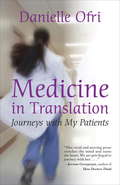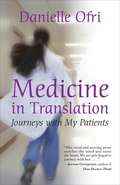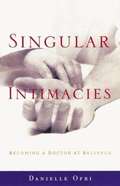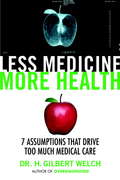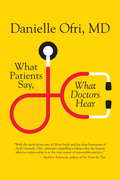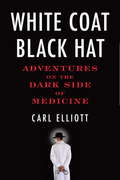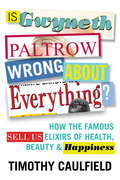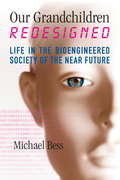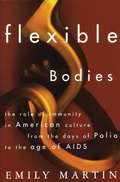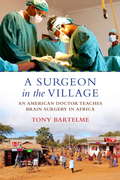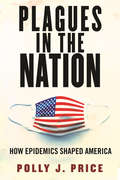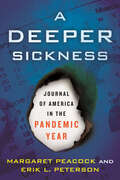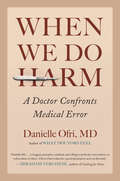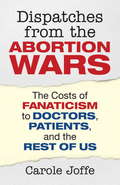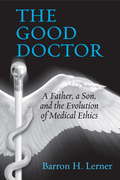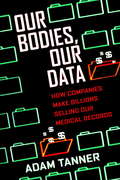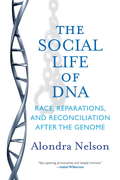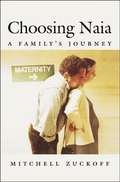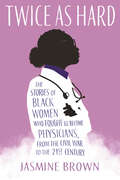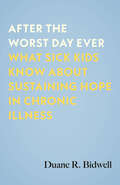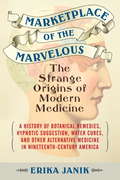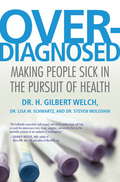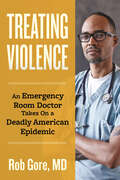- Table View
- List View
Medicine in Translation
by Danielle OfriFrom a doctor Oliver Sacks has called a "born storyteller," a riveting account of practicing medicine at a fast-paced urban hospital For two decades, Dr. Danielle Ofri has cared for patients at Bellevue, the oldest public hospital in the country and a crossroads for the world's cultures. In Medicine in Translation she introduces us, in vivid, moving portraits, to her patients, who have braved language barriers, religious and racial divides, and the emotional and practical difficulties of exile in order to access quality health care. Living and dying in the foreign country we call home, they have much to teach us about the American way, in sickness and in health.From the Trade Paperback edition.
Medicine in Translation: Journeys with My Patients
by Danielle OfriFor two decades, Dr. Danielle Ofri has cared for patients at Bellevue, the oldest public hospital in the country and a crossroads for the world's cultures. In Medicine in Translation, she introduces us, in vivid, moving portraits, to the patients she has known. They have braved language barriers, religious and racial divides, and the emotional and practical difficulties of exile in order to access quality health care. Sharing their journeys with them over the years, Danielle has witnessed some of their best and worst moments, and come to admire their resilience and courageous spirit. Danielle introduces us to her patients: Samuel Nwanko, who was brutally attacked by a Nigerian cult in his homeland and is attempting to create a new life in America; Jade Collier, an Aussie who refuses to let a small thing like a wheelchair keep her from being a homegrown ambassador to New York City; Julia Barquero, a Guatemalan woman who migrated to the States to save her disabled son but cannot obtain the lifesaving heart transplant she needs because she is undocumented. We meet a young Muslim woman threatened at knifepoint for wearing her veil, and the spitfire Señora Estrella, one of Danielle's many Spanish-speaking patients, whose torrent of words helps seal Danielle's resolve to improve her own Spanish, an essential skill in today's urban hospitals. And so she, her husband, and their two young children and seventy-five-pound dog relocate to Costa Rica, where they discover potholes the size of their New York City apartment, a casual absence of street signs or even street names, tangy green-skinned limon dulce dangling in the playground, and sudden rains surging over the craggy edges of roadside ditches. Ultimately, Danielle experiences being a patient in a foreign country when she gives birth to their third child, a "Costarricense" girl. With controversy over immigrants in our society escalating, and debate surrounding health-care reform becoming increasingly urgent, Ofri's riveting stories about her patients could not be more timely. Living and dying in the foreign country we call home, they have much to teach us about the American way, in sickness and in health.
A Final Arc of Sky
by Jennifer CulkinA critical care and emergency flight nurse, Jennifer Culkin is no stranger to death and its dramas. Her memoir plunges the reader into chaotic scenes where she struggles to keep seriously injured patients alive while wedged against the door of an Augusta 109A helicopter. She pulls us into the NICU (neonatal intensive care unit), where she works on babies born too soon, as well as into the PICU (pediatric intensive care unit), where she cares for kids seemingly too small to contain their devastating illnesses. Through these experiences, Culkin explores the overlap between her work and her private life, where her caregiving must eventually be extended to accommodate her sons, her dying mother, then her father, and finally, as she adjusts to life with multiple sclerosis herself. In the closing chapter, Culkin writes of friends and colleagues injured or killed in helicopter crashes, calling again on her constant awareness of the fragility of life.
Singular Intimacies: Becoming a Doctor at Bellevue
by Danielle OfriIn a series of fifteen essays, Ofri traces her evolution as a physician, from frightened medical student to confident senior resident. Her training is conducted at Bellevue in Manhattan, where she treats a vast cross-section of society. Each essay focuses on her treatment of and interactions with a particular patient, and shows her emotional growth as well as her acquisition of medical knowledge. In the course of the book Ofri struggles to come to terms with her own helplessness before the inevitability of death.
Less Medicine, More Health
by H. Gilbert WelchThe author of the highly acclaimed Overdiagnosed describes seven widespread assumptions that encourage excessive, often ineffective, and sometimes harmful medical care. You might think the biggest problem in medical care is that it costs too much. Or that health insurance is too expensive, too uneven, too complicated--and gives you too many forms to fill out. But the central problem is that too much medical care has too little value. Dr. H. Gilbert Welch is worried about too much medical care. It's not to deny that some people get too little medical care, rather that the conventional concern about "too little" needs to be balanced with a concern about "too much": too many people being made to worry about diseases they don't have--and are at only average risk to get; too many people being tested and exposed to the harmful effects of the testing process; too many people being subjected to treatments they don't need--or can't benefit from. The American public has been sold the idea that seeking medical care is one of the most important steps to maintain wellness. Surprisingly, medical care is not, in fact, well correlated with good health. So more medicine does not equal more health; in reality the opposite may be true. The general public harbors assumptions about medical care that encourage overuse, assumptions like it's always better to fix the problem, sooner (or newer) is always better, or it never hurts to get more information. Less Medicine, More Health pushes against established wisdom and suggests that medical care can be too aggressive. Drawing on his twenty-five years of medical practice and research, Dr. Welch notes that while economics and lawyers contribute to the excesses of American medicine, the problem is essentially created when the general public clings to these powerful assumptions about the value of tests and treatments--a number of which are just plain wrong. By telling fascinating (and occasionally amusing) stories backed by reliable data, Dr. Welch challenges patients and the health-care establishment to rethink some very fundamental practices. His provocative prescriptions hold the potential to save money and, more important, improve health outcomes for us all.From the Hardcover edition.
What Patients Say, What Doctors Hear
by Danielle OfriCan refocusing conversations between doctors and their patients lead to better health? Despite modern medicine’s infatuation with high-tech gadgetry, the single most powerful diagnostic tool is the doctor-patient conversation, which can uncover the lion’s share of illnesses. However, what patients say and what doctors hear are often two vastly different things.Patients, anxious to convey their symptoms, feel an urgency to “make their case” to their doctors. Doctors, under pressure to be efficient, multitask while patients speak and often miss the key elements. Add in stereotypes, unconscious bias, conflicting agendas, and fear of lawsuits and the risk of misdiagnosis and medical errors multiplies dangerously.Though the gulf between what patients say and what doctors hear is often wide, Dr. Danielle Ofri proves that it doesn’t have to be. Through the powerfully resonant human stories that Dr. Ofri’s writing is renowned for, she explores the high-stakes world of doctor-patient communication that we all must navigate. Reporting on the latest research studies and interviewing scholars, doctors, and patients, Dr. Ofri reveals how better communication can lead to better health for all of us.
White Coat, Black Hat
by Carl ElliotOver the last twenty-five years, medicine and consumerism have been on an unchecked collision course, but, until now, the fallout from their impact has yet to be fully uncovered. A writer for The New Yorker and The Atlantic Monthly, Carl Elliott ventures into the uncharted dark side of medicine, shining a light on the series of social and legislative changes that have sacrificed old-style doctoring to the values of consumer capitalism. Along the way, he introduces us to the often shifty characters who work the production line in Big Pharma: from the professional guinea pigs who test-pilot new drugs and the ghostwriters who pen "scientific" articles for drug manufacturers to the PR specialists who manufacture "news" bulletins. We meet the drug reps who will do practically anything to make quota in an ever-expanding arms race of pharmaceutical gift-giving; the "thought leaders" who travel the world to enlighten the medical community about the wonders of the latest release; even, finally, the ethicists who oversee all that commercialized medicine has to offer from their pharma-funded perches. Taking the pulse of the medical community today, Elliott discovers the culture of deception that has become so institutionalized many people do not even see it as a problem. Head-turning stories and a rogue's gallery of colorful characters become his springboard for exploring larger ethical issues surrounding money. Are there certain things that should not be bought and sold? In what ways do the ethics of business clash with the ethics of medical care? And what is wrong with medical consumerism anyway? Elliott asks all these questions and more as he examines the underbelly of medicine.
Is Gwyneth Paltrow Wrong About Everything?
by Timothy CaulfieldAn exploration of the effect our celebrity-dominated culture has on our ideas of living the good life What would happen if an average Joe tried out for American Idol, underwent a professional makeover, endured Gwyneth Paltrow's "Clean Cleanse," and followed the outrageous rituals of the rich and famous? Health law policy researcher Timothy Caulfield finds out in this thoroughly unique, engaging, and provocative book about celebrity culture and its iron grip on today's society. Over the past decade, our perceptions of beauty, health, success, and happiness have become increasingly framed by a popular culture steeped in celebrity influence and ever more disconnected from reality. This isn't just a hyperbolic assertion. Research tells us that our health decisions and goals are influenced by both celebrity culture and celebrity endorsements, our children's ambitions are now overwhelmingly governed by the fantasy of fame, and the ideals of beauty and success are mediated through a celebrity-dominated worldview. But while much has been written about the cause of our obsession with the rich and famous, Caulfield argues that not enough has been done to debunk celebrity messages and promises about health, diet, beauty, or the secret to happiness. From the obvious dangers, to body image of super-thin models and actors, or Gwyneth Paltrow's enthusiastic endorsement of a gluten free-diet for almost everyone, or Jenny McCarthy's ill-informed claims of the risks associated with vaccines, celebrity opinions have the power to dominate our conversations and outlooks on our lives and ourselves. As marketing and social media bring celebrities and their admirers ever closer, celebrity status and lifestyle has become a seemingly more realistic and obtainable goal. Being famous has become the main ambition of an increasing number of average citizens, above being kind, successful, or loved. The celebrity brand is at once the most desired state of being (modern day royalty!) and one of the most socially problematic. Caulfield provides an entertaining look into the celebrity world, including vivid accounts of his own experiences trying out for American Idol, having his skin resurfaced, and doing the cleanse; interviews with actual celebrities; thought-provoking facts, and a practical and evidence-based reality check on our own celebrity ambitions.From the Hardcover edition.
Our Grandchildren Redesigned
by Michael BessA panoramic overview of biotechnologies that can endlessly boost human capabilities and the drastic changes these "superhuman" traits could trigger Biotechnology is moving fast. In the coming decades, advanced pharmaceuticals, bioelectronics, and genetic interventions will be used not only to heal the sick but to boost human physical and mental performance to unprecedented levels. People will have access to pills that make them stronger and faster, informatic devices will interface seamlessly with the human brain, and epigenetic modification may allow people to reshape their own physical and mental identities at will.Until recently, such major technological watersheds--like the development of metal tools or the industrialization of manufacturing--came about incrementally over centuries or longer. People and social systems had time to adapt: they gradually developed new values, norms, and habits to accommodate the transformed material conditions. But contemporary society is dangerously unprepared for the dramatic changes it is about to experience down this road on which it is already advancing at an accelerating pace.The results will no doubt be mixed. People will live longer, healthier lives, will fine-tune their own thought processes, and will generate staggeringly complex and subtle forms of knowledge and insight. But these technologies also threaten to widen the rift between rich and poor, to generate new forms of social and economic division, and to force people to engage in constant cycles of upgrades and boosts merely to keep up. Individuals who boost their traits beyond a certain threshold may acquire such extreme capabilities that they will no longer be recognized as unambiguously human.In this important and timely book, prize-winning historian Michael Bess provides a clear, nontechnical overview of cutting-edge biotechnology and paints a vivid portrait of a near-future society in which bioenhancement has become a part of everyday life. He surveys the ethical questions raised by the enhancement enterprise and explores the space for human agency in dealing with the challenges that these technologies will present.Headed your way over the coming decades: new biotechnologies that can powerfully alter your body and mind.The possibilities are tantalizing:* Rejuvenation therapies offering much longer lives (160 and even beyond) in full vigor and mental acuity * Cognitive enhancement through chemical or bioelectronic means (the rough equivalent of doubling or tripling IQ scores) * Epigenetic tools for altering some of your genetically influenced traits at any point in your lifetime (body shape, athletic ability, intelligence, personality) * Bioelectronic devices for modulating your own brain processes, including your "pleasure centers" (a potentially non-stop high) * Direct control of machines by thought, and perhaps direct communication with other people, brain-to-brain (a new dimension of sharing and intimacy) But some of the potential consequences are also alarming: * A growing rift between the biologically enhanced and those who can't afford such modifications * A constant cycle of upgrades and boosts as the bar of "normal" rises ever higher--"Humans 95, Humans XP, Humans 8" * The fragmentation of humankind into rival "bioenhancement clusters" * A gradually blurring boundary between "person" and "product" * Extreme forms of self-modification, with some individuals no longer recognized as unambiguously humanFrom the Hardcover edition.
Flexible Bodies: Tracking Immunity in American Culture from the Days of Polio to the Age of AIDS
by Emily MartinEmily Martin traces Americans' changing ideas about health and immunity since the 1940s. She explores the implications of our emphasis on 'flexibility' in contexts from medicine to the corporate world, warning that we may be approaching a new form of social Darwinism.
A Surgeon in the Village: An American Doctor Teaches Brain Surgery in Africa
by Tony BartelmeAn inspiring story of doctors who changed the health care of an African nationDr. Dilan Ellegala arrives in Tanzania, shocked to find the entire country has just three brain surgeons for its population of forty-two million. Haydom Lutheran Hospital lacks even the most basic surgical tools, not even a saw to open a patient’s skull. Here, people with head injuries or brain tumors heal on their own or die. When confronted with a villager suffering from a severe head trauma, Dilan buys a tree saw from a farmer, sterilizes it, and then uses it to save the man’s life.Yet Dilan realizes that there are far too many neurosurgery patients for one person to save, and of course he will soon be leaving Tanzania. He needs to teach someone his skills. He identifies a potential student in Emmanuel Mayegga, a stubborn assistant medical officer who grew up in a mud hut. Though Mayegga has no medical degree, Dilan sees that Mayegga has the dexterity, intelligence, and determination to do brain surgery. Over six months, he teaches Mayegga how to remove tumors and treat hydrocephalus. And then, perhaps more important, Dilan teaches Mayegga how to pass on his newfound skills. Mayegga teaches a second Tanzanian, who teaches a third. It’s a case of teach-a-man-to-fish meets brain surgery.As he guides these Tanzanians to do things they never thought possible, Dilan challenges the Western medical establishment to do more than send vacationing doctors on short-term medical missions. He discovers solutions that could transform health care for two billion people across the world.A Surgeon in the Village is the incredible and riveting account of one man’s push to “train-forward”—to change our approach to aid and medical training before more lives are needlessly lost. His story is a testament to the transformational power of teaching and the ever-present potential for change. As many as seventeen million people die every year because of a shortage of surgeons, more than die from AIDS, malaria, and tuberculosis combined. Dilan Ellegala and other visionaries are boldly proposing ways of saving lives.
Plagues in the Nation: How Epidemics Shaped America
by Polly J. PriceSheds light on the US government&’s response to epidemics through history—with larger conclusions about COVID-19 and reforms needed before the next plague.In this narrative history of the US through major outbreaks of contagious disease, from yellow fever to the Spanish flu, from HIV/AIDS to Ebola, Polly J. Price examines how law and government affected the outcome of epidemics—and how those outbreaks in turn shaped our government. Price presents a fascinating history that has never been fully explored and draws larger conclusions about the gaps in our governmental and legal response. Plagues in the Nation examines how our country learned—and failed to learn—how to address the panic, conflict, and chaos that are the companions of contagion, what policies failed America again and again, and what we must do better next time.
A Deeper Sickness: Journal of America in the Pandemic Year
by Margaret Peacock Erik L. PetersonA harrowing chronicle by two leading historians, capturing in real time the events of a year marked by multiple devastations.When we look back at the year 2020, how can we describe what really happened? In A Deeper Sickness, award-winning historians Margaret Peacock and Erik Peterson set out to preserve what they call the &“focused confusion&”, and to probe deeper into what they consider the Four Pandemics that converged around the 12 astonishing months of 2020: · Disease· Disinformation· Poverty· Violence Drs. Peacock and Peterson use their interdisciplinary expertise to extend their analysis beyond the viral science, and instead into the social, political, and historical dimensions of this crisis. They consulted with dozens of experts and witnesses from a wide range of fields – from leading epidemiologists and health care workers to leaders of the Black Lives Matter movement, district attorneys, political scientists, philosophers, and more. Their journey revealed a sick country that believed it was well, a violent nation that believed it was peaceful; one that mistook poverty for prosperity and accountability for rebellion.A Deeper Sickness will help readers sift through the chaos and misinformation that characterized those frantic days. It is both an unflinching indictment of a nation that is still reeling and a testament to the power of human resilience and collective memory.Readers can share their story and become a contributing author by visiting an interactive digital museum, where the authors have preserved dozens of more stories and interviews. Visit Margaret Peacock and Erik L. Peterson&’s official website for A Deeper Sickness: adhc.lib.ua.edu/pandemicbook
When We Do Harm: A Doctor Confronts Medical Error
by Danielle OfriMedical mistakes are more pervasive than we think. How can we improve outcomes? An acclaimed MD's rich stories and research explore patient safety.Patients enter the medical system with faith that they will receive the best care possible, so when things go wrong, it's a profound and painful breach. Medical science has made enormous strides in decreasing mortality and suffering, but there's no doubt that treatment can also cause harm, a significant portion of which is preventable. In When We Do Harm, practicing physician and acclaimed author Danielle Ofri places the issues of medical error and patient safety front and center in our national healthcare conversation. Drawing on current research, professional experience, and extensive interviews with nurses, physicians, administrators, researchers, patients, and families, Dr. Ofri explores the diagnostic, systemic, and cognitive causes of medical error. She advocates for strategic use of concrete safety interventions such as checklists and improvements to the electronic medical record, but focuses on the full-scale cultural and cognitive shifts required to make a meaningful dent in medical error. Woven throughout the book are the powerfully human stories that Dr. Ofri is renowned for. The errors she dissects range from the hardly noticeable missteps to the harrowing medical cataclysms.While our healthcare system is--and always will be--imperfect, Dr. Ofri argues that it is possible to minimize preventable harms, and that this should be the galvanizing issue of current medical discourse.
Dispatches from the Abortion Wars
by Carole JoffeSurprising firsthand accounts from the front lines of abortion provision reveal the persistent cultural, political, and economic hurdles to access More than thirty-five years after women won the right to legal abortion, most people do not realize how inaccessible it has become. In these pages, reproductive-health researcher Carole Joffe shows how a pervasive stigma--cultivated by the religious right--operates to maintain barriers to access by shaming women and marginalizing abortion providers. Through compelling testimony from doctors, health-care workers, and patients, Joffe reports the lived experiences behind the polemics, while also offering hope for a more compassionate standard of women's health care. From the Trade Paperback edition.
The Good Doctor
by Barron H. LernerThe story of two doctors, a father and son, who practiced in very different times and the evolution of the ethics that profoundly influence health care As a practicing physician and longtime member of his hospital's ethics committee, Dr. Barron Lerner thought he had heard it all. But in the mid-1990s, his father, an infectious diseases physician, told him a stunning story: he had physically placed his body over an end-stage patient who had stopped breathing, preventing his colleagues from performing cardiopulmonary resuscitation, even though CPR was the ethically and legally accepted thing to do. Over the next few years, the senior Dr. Lerner tried to speed the deaths of his seriously ill mother and mother-in-law to spare them further suffering. These stories angered and alarmed the younger Dr. Lerner--an internist, historian of medicine, and bioethicist--who had rejected physician-based paternalism in favor of informed consent and patient autonomy. The Good Doctor is a fascinating and moving account of how Dr. Lerner came to terms with two very different images of his father: a revered clinician, teacher, and researcher who always put his patients first, but also a physician willing to "play God," opposing the very revolution in patients' rights that his son was studying and teaching to his own medical students. But the elder Dr. Lerner's journals, which he had kept for decades, showed the son how the father's outdated paternalism had grown out of a fierce devotion to patient-centered medicine, which was rapidly disappearing. And they raised questions: Are paternalistic doctors just relics, or should their expertise be used to overrule patients and families that make ill-advised choices? Does the growing use of personalized medicine--in which specific interventions may be best for specific patients--change the calculus between autonomy and paternalism? And how can we best use technologies that were invented to save lives but now too often prolong death? In an era of high-technology medicine, spiraling costs, and health-care reform, these questions could not be more relevant. As his father slowly died of Parkinson's disease, Barron Lerner faced these questions both personally and professionally. He found himself being pulled into his dad's medical care, even though he had criticized his father for making medical decisions for his relatives. Did playing God--at least in some situations--actually make sense? Did doctors sometimes "know best"? A timely and compelling story of one family's engagement with medicine over the last half century, The Good Doctor is an important book for those who treat illness--and those who struggle to overcome it.From the Hardcover edition.
Our Bodies, Our Data: How Companies Make Billions Selling Our Medical Records
by Adam TannerHow the hidden trade in our sensitive medical information became a multibillion-dollar business, but has done little to improve our health-care outcomesHidden to consumers, patient medical data has become a multibillion-dollar worldwide trade industry between our health-care providers, drug companies, and a complex web of middlemen. This great medical-data bazaar sells copies of the prescription you recently filled, your hospital records, insurance claims, blood-test results, and more, stripped of your name but possibly with identifiers such as year of birth, gender, and doctor. As computing grows ever more sophisticated, patient dossiers become increasingly vulnerable to reidentification and the possibility of being targeted by identity thieves or hackers.Paradoxically, comprehensive electronic files for patient treatment—the reason medical data exists in the first place—remain an elusive goal. Even today, patients or their doctors rarely have easy access to comprehensive records that could improve care. In the evolution of medical data, the instinct for profit has outstripped patient needs. This book tells the human, behind-the-scenes story of how such a system evolved internationally.It begins with New York advertising man Ludwig Wolfgang Frohlich, who founded IMS Health, the world’s dominant health-data miner, in the 1950s. IMS Health now gathers patient medical data from more than 45 billion transactions annually from 780,000 data feeds in more than 100 countries. Our Bodies, Our Data uncovers some of Frohlich’s hidden past and follows the story of what happened in the following decades. This is both a story about medicine and medical practice, and about big business and maximizing profits, and the places these meet, places most patients would like to believe are off-limits.Our Bodies, Our Data seeks to spark debate on how we can best balance the promise big data offers to advance medicine and improve lives while preserving the rights and interests of every patient. We, the public, deserve a say in this discussion. After all, it’s our data.
The Social Life of DNA
by Alondra NelsonThe unexpected story of how genetic testing is affecting race in AmericaWe know DNA is a master key that unlocks medical and forensic secrets, but its genealogical life is both revelatory and endlessly fascinating. Tracing genealogy is now the second-most popular hobby amongst Americans, as well as the second-most visited online category. This billion-dollar industry has spawned popular television shows, websites, and Internet communities, and a booming heritage tourism circuit.The tsunami of interest in genetic ancestry tracing from the African American community has been especially overwhelming. In The Social Life of DNA, Alondra Nelson takes us on an unprecedented journey into how the double helix has wound its way into the heart of the most urgent contemporary social issues around race.For over a decade, Nelson has deeply studied this phenomenon. Artfully weaving together keenly observed interactions with root-seekers alongside illuminating historical details and revealing personal narrative, she shows that genetic genealogy is a new tool for addressing old and enduring issues. In The Social Life of DNA, she explains how these cutting-edge DNA-based techniques are being used in myriad ways, including grappling with the unfinished business of slavery: to foster reconciliation, to establish ties with African ancestral homelands, to rethink and sometimes alter citizenship, and to make legal claims for slavery reparations specifically based on ancestry.Nelson incisively shows that DNA is a portal to the past that yields insight for the present and future, shining a light on social traumas and historical injustices that still resonate today. Science can be a crucial ally to activism to spur social change and transform twenty-first-century racial politics. But Nelson warns her readers to be discerning: for the social repair we seek can't be found in even the most sophisticated science. Engrossing and highly original, The Social Life of DNA is a must-read for anyone interested in race, science, history and how our reckoning with the past may help us to chart a more just course for tomorrow.From the Hardcover edition.
Choosing Naia: A Family's Journey
by Mitchell ZuckoffChoosing Naia is a powerful story, based on an award-winning series of articles about a modern family and their Down syndrome baby. A dramatic and carefully detailed account of one family's journey through the maze of genetic counseling, medical technology, and disability rights
When Someone You Love Has Alzheimer's: The Caregiver's Journey
by Earl A. Grollman Kenneth S. Kosik"When Someone You Love Has Alzheimer's" offers help and hope to people coping with the illness of someone they love. It answers vital questions about the disease such as: What really happens to people with the disease? Can it be inherited?
Twice as Hard: The Stories of Black Women Who Fought to Become Physicians, From the Civil War to the 21st Century
by Jasmine BrownBlack women physicians’ stories have gone untold for far too long, leaving gaping holes in American medical history, in women’s history, and in black history. It’s time to set the record straight <p><p> No real account of black women physicians in the US exists, and what little mention is made of these women in existing histories is often insubstantial or altogether incorrect. In this work of extensive research, Jasmine Brown offers a rich new perspective, penning the long-erased stories of nine pioneering black women physicians beginning in 1860, when a black woman first entered medical school. Brown champions these black women physicians, including the stories of: <p><p> Dr. Rebecca Lee Crumpler, who graduated from medical school only fourteen months after the Emancipation Proclamation was signed and provided medical care for the newly freed slaves who had been neglected and exploited by the medical system. <p><p> Dr. Edith Irby Jones, the first African American to attend a previously white-only medical school in the Jim Crow South, where she was not allowed to eat lunch with her classmates or use the women’s bathroom. Still, Dr. Irby Jones persisted and graduated from medical school, going on to directly inspire other black women to pursue medicine such as . . . <p><p> Dr. Joycelyn Elders, who, after meeting Dr. Irby Jones, changed her career ambitions from becoming a Dillard’s salesclerk to becoming a doctor. In 1993, President Bill Clinton appointed Dr. Elders as the US surgeon general, making her the first African American and second woman to hold this position. <p><p> Brown tells the stories of these doctors from the perspective of a black woman in medicine. Her journey as a medical student already has parallels to those of black women who entered medicine generations before her. What she uncovers about these women’s struggles, their need to work twice as hard and be twice as good, and their ultimate success serves as instruction and inspiration for new generations considering a career in medicine or science.
After the Worst Day Ever: What Sick Kids Know About Sustaining Hope in Chronic Illness
by Duane R. BidwellFor those who care for chronically ill children, a new understanding of hope that equips adults to better nurture pediatric hope among sick kids—articulated by the children themselvesAs anyone with a chronic illness knows, hope can sometimes be hard to come by. For parents and caregivers of children with serious illness, there can be a real struggle to move beyond one's own grief, fear, and suffering to see what hope means for these kids.Duane Bidwell, a scholar, minister, and former hospital chaplain who has struggled with serious illness himself, spent time with 48 chronically ill children in dialysis units and transplant clinics around the United States. Chronically ill kids, he found, don&’t adhere to popular or scholarly understandings of hope. They experience hope as a sense of well-being in the present, not a promise of future improvement, an ability to set goals, or the absence of illness and suffering. With this mindset, these kids suggest a new understanding of pediatric hope, saying hope becomes concrete when they (1) realize community, (2) claim power, (3) attend to Spirit, (4) choose trust, and (5) maintain identity.Offering textured portraits of children with end-stage kidney disease, After the Worst Day Ever illustrates in their words how sick children experience, maintain, and turn toward hope even when illness cannot be cured and severely limits quality of life. Their insights reveal how the adults in a sick child's world—parents, chaplains, medical professionals, teachers, and others—can nurture hope. They also shift our understanding of hope from an internal resource located &“inside&” an individual to a shared, communal experience that becomes a resource for individuals.Rich and moving, Bidwell&’s work helps us imagine anew what it means to sustain hope despite inescapable suffering and the limits of chronic illness.
Marketplace of the Marvelous
by Erika JanikAn entertaining introduction to the quacks, snake-oil salesmen, and charlatans, who often had a point Despite rampant scientific innovation in nineteenth-century America, traditional medicine still adhered to ancient healing methods such as induced vomiting and bleeding, blistering, and sweating patients. Facing such horrors, many patients ran with open arms to burgeoning practices promising new ways to cure their ills: Hydropaths promised cures using "healing tubs." Franz Anton Mesmer applied magnets to a patient's body, while Daniel David Palmer restored a man's hearing by knocking on his vertebrae. Phrenologists emerged, claiming the topography of one's skull could reveal the intricacies of one's character. Bizarre as these methods may seem, many are the predecessors of today's notions of health. We have the nineteenth-century practice of "medical gymnastics" to thank for today's emphasis on daily exercise, and hydropathy's various water cures gave us the notion of showers and the mantra of "eight glasses of water a day." These early medical "deviants," including women who had been barred from the patriarchy of "legitimate doctoring," raised questions and posed challenges to established ideas, and though the fads faded and many were discredited by the scientific revolution, some ideas behind the quackery are staples in today's health industry. Janik tells the colorful stories of these "quacks," whose shams, foils, or genuine wish to heal helped shape and influence modern medicine.
Overdiagnosed: Making People Sick in the Pursuit of Health
by H. Gilbert WelchFrom a nationally recognized expert, an exposé of the worst excesses of our zeal for medical testingGoing against the conventional wisdom reinforced by the medical establishment and Big Pharma that more screening is the best preventative medicine, Dr. Gilbert Welch builds a compelling counterargument that what we need are fewer, not more, diagnoses. Documenting the excesses of American medical practice that labels far too many of us as sick, Welch examines the social, ethical, and economic ramifications of a health-care system that unnecessarily diagnoses and treats patients, most of whom will not benefit from treatment, might be harmed by it, and would arguably be better off without screening.Drawing on twenty-five years of medical practice and research on the effects of medical testing, Welch explains in a straightforward, jargon-free style how the cutoffs for treating a person with "abnormal" test results have been drastically lowered just when technological advances have allowed us to see more and more "abnormalities," many of which will pose fewer health complications than the procedures that ostensibly cure them. Citing studies that show that 10 percent of two thousand healthy people were found to have had silent strokes, and that well over half of men over age sixty have traces of prostate cancer but no impairment, Welch reveals overdiagnosis to be rampant for numerous conditions and diseases, including diabetes, high cholesterol, osteoporosis, gallstones, abdominal aortic aneuryisms, blood clots, as well as skin, prostate, breast, and lung cancers.With genetic and prenatal screening now common, patients are being diagnosed not with disease but with "pre-disease" or for being at "high risk" of developing disease. Revealing the economic and medical forces that contribute to overdiagnosis, Welch makes a reasoned call for change that would save us from countless unneeded surgeries, excessive worry, and exorbitant costs, all while maintaining a balanced view of both the potential benefits and harms of diagnosis. Drawing on data, clinical studies, and anecdotes from his own practice, Welch builds a solid, accessible case against the belief that more screening always improves health care.
Treating Violence: An Emergency Room Doctor Takes On a Deadly American Epidemic
by Rob GoreThe inspiring story of a Black doctor who was deeply affected by the violence that plagued his Brooklyn childhood and later dedicated himself to addressing trauma and violence as public health issuesRob Gore first encountered violence when he was beaten and robbed as a 10-year old; it was treated as an inevitable fact of life, but after another brush with violence as a teen, he began to reject that prevalent attitude. As he matured and became a doctor, he grew in his determination to find treatments for what he saw not as an unavoidable fact for most people living in vulnerable, underserved neighborhoods especially, but as a public health issue that could be addressed by early intervention and solid support, beginning in the medical community. He also became deeply involved in efforts to diversify the entire field of medicine, starting with the &“front lines&” in the Emergency Department.Seeing his brother Angel and close friend Willis fall prey to the epidemic of violence with profound—and in Willis&’s case—deadly consequences, Rob began seriously researching the issue and went on to found an organization which is one of the models for successful approaches to reducing violence and protecting victims, who are disproportionately BIPOC, living in impoverished neighborhoods, or members of the LGBTQ+ community. Here he provides not only statistics, but stories of what he witnessed in NYC neighborhoods, in Atlanta, Chicago, Buffalo and even in medical work in Haiti and Kenya. His work with the Kings Against Violence Initiate (KAVI) and allied organizations is a blueprint for treating violence not as a police matter, but as a public health crisis, which can and should be addressed and substantially reduced. The people he introduces us to in these pages are not merely victims, but often advocates, paving the way for eliminating the epidemic of violence in our country.
